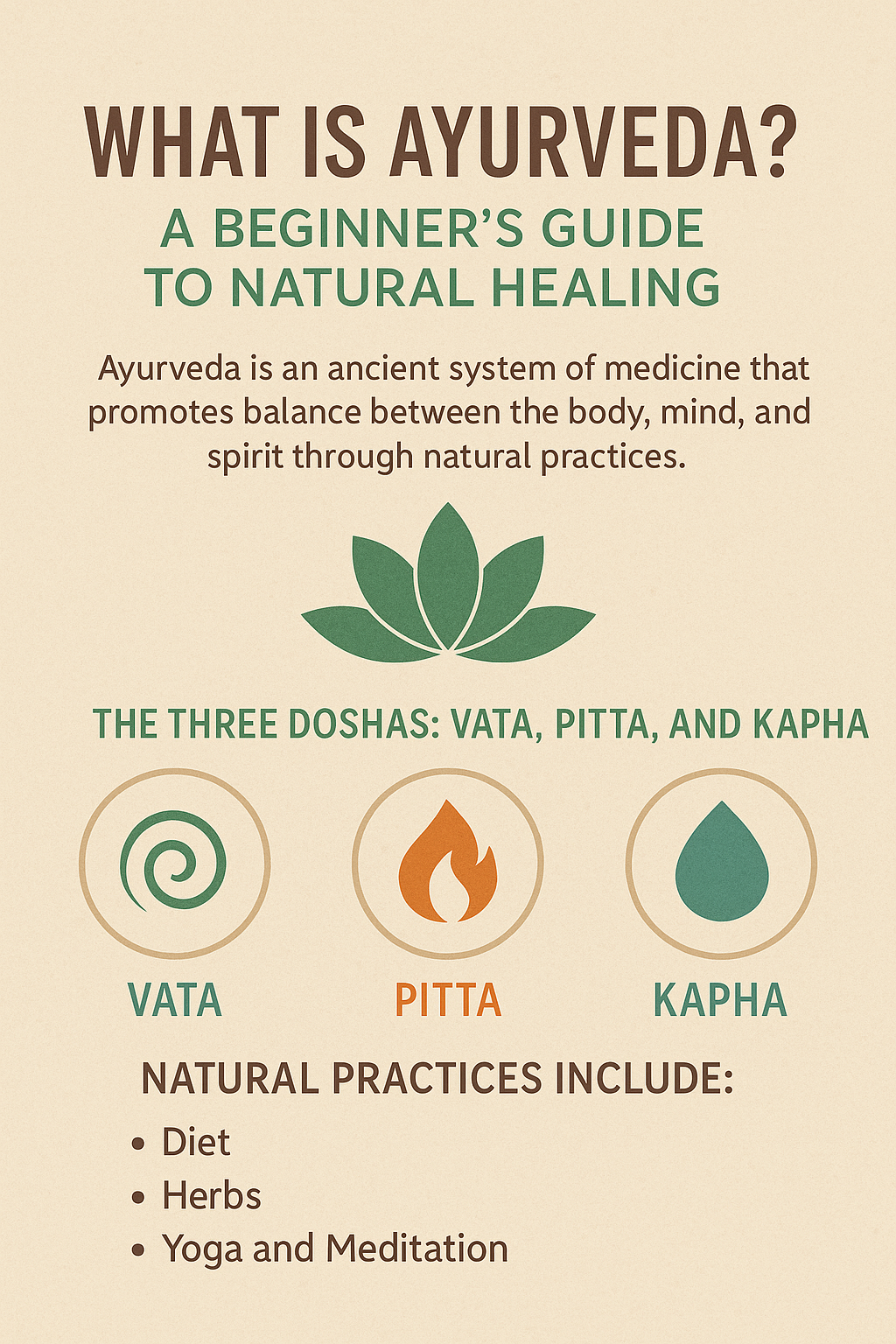Are you curious about natural healing methods that go beyond symptom relief and promote long-term well-being? Ayurveda, an ancient system of medicine from India, offers a holistic approach to health that focuses on balance, prevention, and harmony between body, mind, and spirit.
In this beginner’s guide to Ayurveda, you’ll discover what it is, how it works, and how you can begin incorporating its powerful principles into your daily life.
What Is Ayurveda?
Ayurveda is a Sanskrit word that means “science of life” (“ayur” = life, “veda” = knowledge). Developed over 5,000 years ago, it is one of the world’s oldest medical systems and is still widely practiced today, especially in India and increasingly around the globe.
Unlike Western medicine, which often focuses on treating symptoms, this natural system emphasizes understanding the root cause of illness and supporting the body’s natural ability to heal itself.
The Three Doshas: Vata, Pitta, and Kapha
A key principle of this natural approach to wellness is the idea of doshas—three vital energies that influence every physical and mental function.
- Vata (air + ether): governs movement, creativity, and flexibility. When imbalanced, it can cause anxiety, dry skin, or digestive issues.
- Pitta (fire + water): governs digestion, metabolism, and transformation. An excess may lead to inflammation, irritability, or acid reflux.
- Kapha (earth + water): provides structure, stability, and lubrication. Too much can lead to lethargy, congestion, or weight gain.
Everyone has a unique combination of these doshas, known as their prakriti or Ayurvedic constitution.
How Does Ayurveda Promote Healing?
The goal of this approach is to restore balance in the body through personalized lifestyle choices, nutrition, herbs, yoga, meditation, and detox practices such as Panchakarma. It believes that health is the result of living in harmony with your nature and the rhythms of nature.
Here are a few common Ayurvedic practices:
- Daily routine (dinacharya): including tongue scraping, oil pulling, warm drinks, and self-massage (abhyanga).
- Seasonal adjustments: eating and behaving differently depending on the time of year to stay in balance.
- Mind-body connection: stress reduction through meditation, breathwork (pranayama), and mindfulness.
Benefits of Ayurveda
Many people turn to Ayurveda for its natural and preventive approach to health. Reported benefits include:
- Improved digestion and metabolism
- Better sleep and energy levels
- Reduced stress and anxiety
- Enhanced skin, hair, and immunity
- Greater self-awareness and emotional balance
How to Get Started
If you’re new to Ayurveda, start simple:
- Discover your dosha: Take an online quiz or consult an Ayurvedic practitioner. Read more about what is Ayurveda?
- Adjust your diet: Eat warm, nourishing foods that balance your constitution.
- Adopt a daily routine: Small practices can have a big impact on your well-being.
Final Thoughts about what is Ayurveda?
Ayurveda is more than a system of medicine—it’s a way of living in alignment with your true nature. Whether you’re looking to boost energy, improve digestion, or find more balance in life, Ayurveda offers timeless tools to support your natural healing journey.
Ready to explore more? Subscribe to our blog for Ayurvedic tips, recipes, and wellness wisdom!

